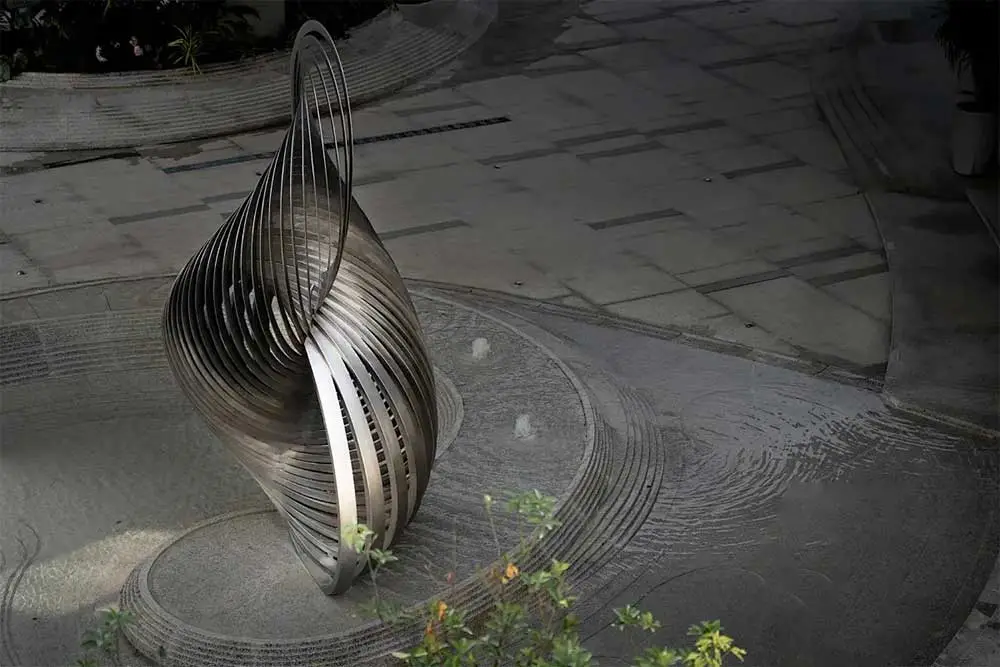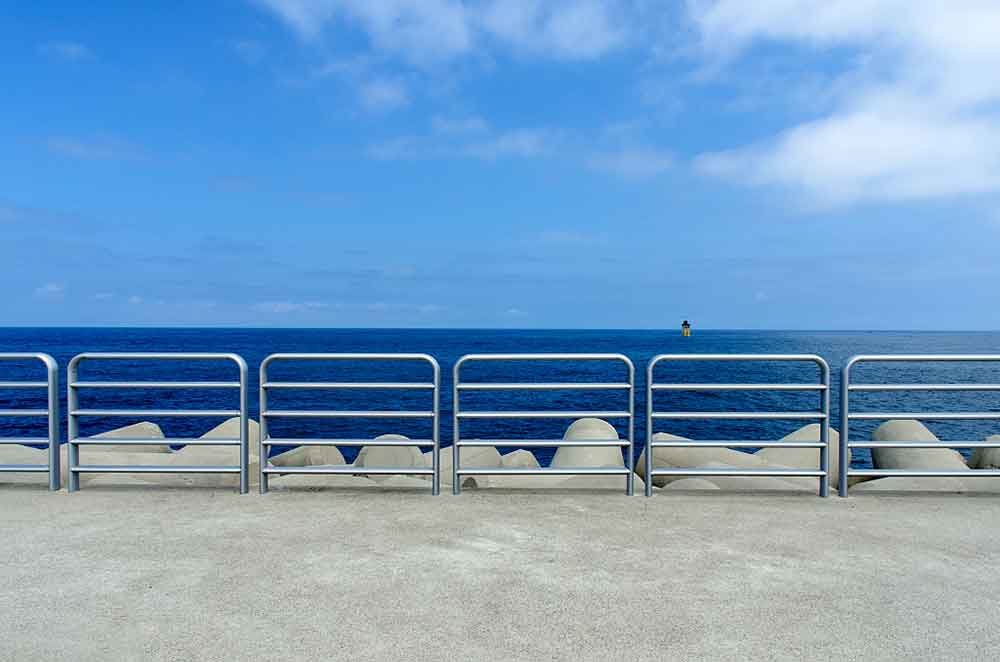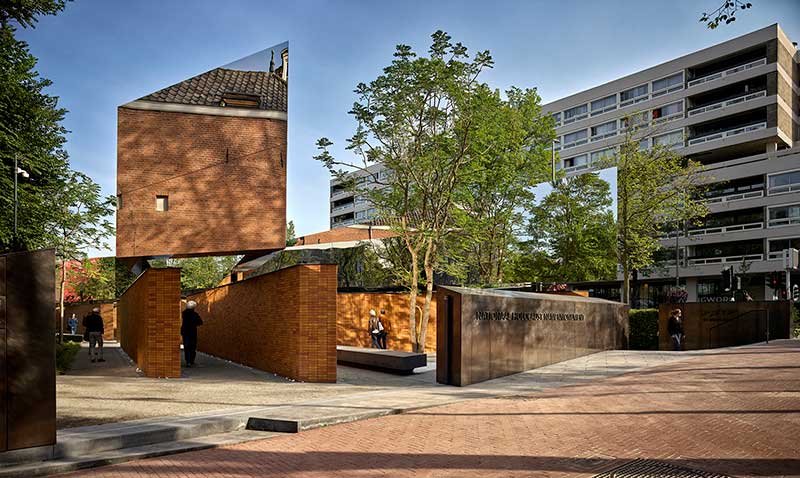Modern Public Spaces: A Canvas for Innovative Outdoor Sculpture
Table of Contents
In today’s world, public spaces are increasingly being transformed into dynamic and interactive environments through the integration of outdoor sculpture. These artistic creations not only add aesthetic value but also serve as a means of communication, evoking emotions and sparking conversations among the public. As the appreciation for public art grows, so does the innovation in sculpture design, pushing the boundaries of what is possible and creating a new era of artistic expression.
The Shift Towards Durable and Expressive Materials
One of the most notable trends in modern outdoor sculpture is the preference for materials that combine durability with artistic expression. Stainless steel, in particular, has emerged as a material of choice for many sculptors due to its ability to withstand the elements while offering a wide range of design possibilities.
The Strength and Versatility of Stainless Steel
- Durability and Longevity
Stainless steel’s resistance to corrosion and weathering makes it an ideal material for long-lasting outdoor installations. Its reflective surface adds a contemporary touch, allowing the sculpture to interact with its surroundings in unique ways. This material’s longevity reduces the need for frequent maintenance and replacement, making it a cost-effective and sustainable choice.
- Aesthetic Versatility
Stainless steel offers a sleek, modern appearance that complements a wide range of environments, from urban plazas to serene gardens. Its reflective surface can capture and reflect the surrounding landscape, creating a dynamic interplay of light and shadow that enhances the overall visual experience. This reflective quality not only adds a contemporary touch but also allows the sculpture to blend harmoniously with its surroundings.
Enhancing Public Spaces with Stainless Steel
- Blending with Nature
Sculptures made from stainless steel can reflect and blend with the natural elements around them, creating a visual connection that enhances the overall experience. This integration of art and nature encourages viewers to appreciate the beauty of both the sculpture and its environment.
- Balancing Urban and Natural Spaces
In urban settings, stainless steel sculptures can serve as focal points that bring a sense of calm and beauty to busy public spaces. Their reflective surfaces can mirror the surrounding architecture, creating a cohesive and visually appealing environment. This balance between urban and natural elements is crucial for creating public spaces that are both functional and aesthetically pleasing.

The Evolution of Interactive and Kinetic Art
Another exciting trend in modern outdoor sculpture is the incorporation of movement and interactivity. Kinetic sculptures and interactive installations are designed to engage viewers on a deeper level, transforming passive observation into an active experience.
Movement as a Medium
- Kinetic Sculptures
Kinetic sculptures use movement to add a dynamic element to the artwork. Whether powered by wind, water, or mechanical means, these sculptures change appearance as they move, creating a constantly evolving visual experience. This movement adds a sense of life and energy to the sculpture, making it more engaging and captivating for viewers.
- Notable Examples
Artists like Theo Jansen have taken kinetic sculpture to new heights with creations like the “Strandbeests,” which walk along beaches powered by the wind. These intricate and imaginative works showcase the potential of movement in art, creating a sense of wonder and curiosity that draws people in and keeps them engaged.
Interactive Installations
- Smart Art Installations
Interactive sculptures take engagement a step further by allowing viewers to physically interact with the artwork. These installations often incorporate sensors, lighting, or other technologies that respond to the presence or actions of the viewer. This interactivity encourages a deeper emotional connection and makes the experience more personal and memorable.
- Virtual Engagement
Augmented reality (AR) and virtual reality (VR) technologies are transforming the way people experience outdoor sculpture. These immersive technologies allow viewers to explore hidden layers of the artwork or view it from multiple angles, deepening their connection and understanding of the piece. Virtual engagement can enhance the artistic experience, making it more accessible and engaging for a wider audience.
The Influence of Minimalism and Nature
Minimalist and nature-inspired designs are also gaining popularity in modern outdoor sculpture. These styles emphasize simplicity, elegance, and a deep connection to the natural world.
The Power of Minimalism
- Less Is More
Minimalist sculptures focus on simplicity and purity of form, creating works that are both understated and powerful. By stripping away unnecessary elements, minimalist designs highlight the essential qualities of the material and form, inviting viewers to appreciate the beauty in simplicity.
- Celebrating Space
Minimalist sculptures often emphasize the negative space around the artwork, making it an integral part of the composition. This focus on space encourages viewers to be more aware of their surroundings and to engage with the environment in a more thoughtful way. The interplay between the sculpture and the space around it creates a sense of balance and harmony that is both visually and emotionally appealing.
Nature as Inspiration
- Organic Design Language
Nature-inspired sculptures draw on organic shapes and elements found in the natural world. These designs create a sense of harmony and connection with the environment, evoking emotions and memories associated with nature. Whether realistic or abstract, nature-inspired sculptures add a touch of natural beauty to public spaces.
- A Range of Styles
Artists may choose to represent nature in either realistic or abstract forms, depending on their vision and the intended message. Realistic sculptures can capture the intricate details of natural elements, while abstract works can evoke a more imaginative and emotional response. The use of wind, light, and other natural elements can add a dynamic and interactive quality to these sculptures, making them come alive in their environment.

Embracing Sustainability in Sculpture Design
With increasing awareness of environmental issues, sustainability has become a key consideration in modern sculpture design. Artists are exploring eco-friendly materials and practices to create works that are both beautiful and environmentally responsible.
Sustainable Materials
- Recyclable Metals
Stainless steel is a standout material in this regard, as it is fully recyclable and has a long lifespan. This reduces the need for frequent replacements and minimizes the environmental impact of the sculpture. By choosing sustainable materials, artists can create works that not only enhance the visual landscape but also contribute to a healthier planet.
- Reused Materials
Many artists are now repurposing salvaged metal or industrial components to create unique and one-of-a-kind sculptures. This approach not only aligns with the principles of sustainability but also adds a layer of history and character to the artwork. By giving new life to discarded materials, artists can create meaningful and thought-provoking pieces that reflect the importance of recycling and reuse.
Green Technologies
- Renewable Energy
Sculptors are integrating renewable energy sources, such as solar power, to illuminate or animate their pieces. This not only reduces carbon emissions but also adds a futuristic and innovative element to outdoor art. The use of solar panels and other green technologies demonstrates a commitment to sustainability and environmental responsibility.
- Long-Term Value
The durability of metal sculptures ensures that they can last for decades, requiring fewer resources over time. This longevity is a key aspect of sustainable sculpture design, as it aligns with the goal of creating art that is both beautiful and environmentally responsible. By choosing materials and methods that minimize environmental impact, artists can create works that stand the test of time while contributing to a more sustainable future.
The Future of Outdoor Sculpture
As technology continues to advance, the future of outdoor sculpture holds exciting possibilities. Artists will have access to new tools and materials that will allow them to create even more intricate and interactive artworks. The integration of digital technologies, such as augmented reality and virtual reality, will also open up new ways for viewers to engage with and experience public art.
Advanced Fabrication Techniques
New fabrication techniques, such as 3D printing and laser cutting, will enable artists to create highly detailed and complex sculptures with greater precision and efficiency. These technologies will push the boundaries of what is possible in sculpture design, allowing artists to bring their most imaginative ideas to life.
Smart and Responsive Installations
Future sculptures will be equipped with sensors and other technologies that allow them to respond to their environment and interact with viewers in real-time. These smart installations will create a more immersive and dynamic experience, blurring the lines between art and technology.
Virtual and Augmented Reality
The use of virtual and augmented reality will provide viewers with new ways to explore and interact with sculptures. These immersive technologies will allow viewers to see hidden layers of the artwork, view it from different perspectives, and even participate in the creative process.

Conclusion
Modern outdoor sculpture is transforming public spaces into vibrant and interactive environments that inspire and engage the public. From the use of durable and expressive materials like stainless steel to the incorporation of movement and interactivity, these artworks are pushing the boundaries of traditional sculpture. As technology and environmental awareness continue to evolve, the future of outdoor sculpture promises to be even more exciting and innovative, creating a lasting impact on our public landscapes.
You Might Also Like
Please Share This
Recent Posts
- The Indispensable Role of Metal Decoration in Hotel Engineering
- Why Engineering Projects Need Professional Stainless Steel Customization
- Differences Between Indoor and Outdoor Metal Decoration and Material Selection
- Reinventing Urban Barriers with Stainless Steel Traffic Bollards
- Stainless Steel Road Bollards for Modern Urban Spaces



